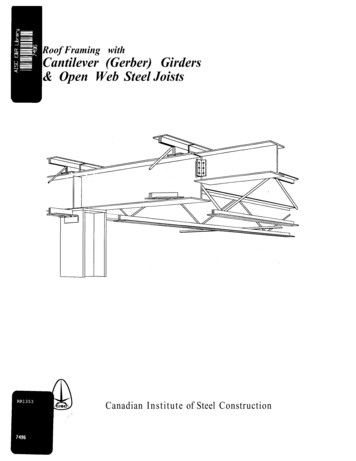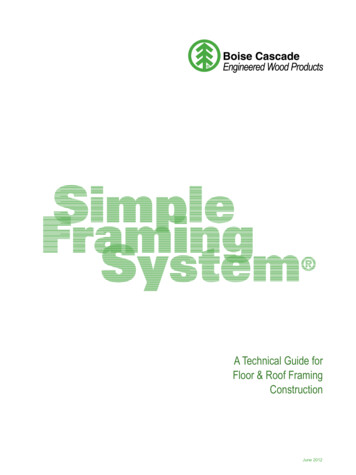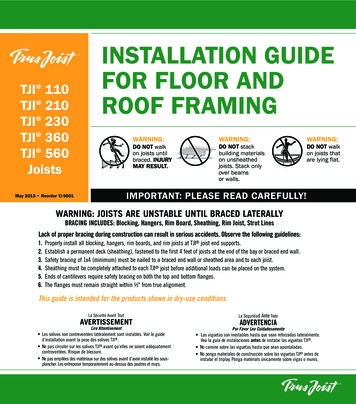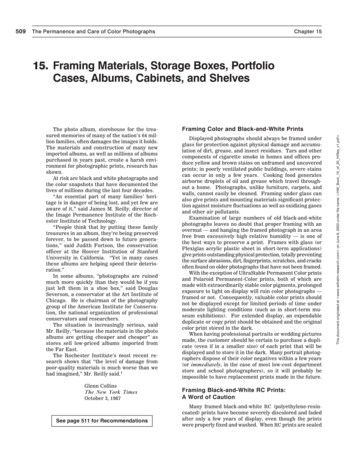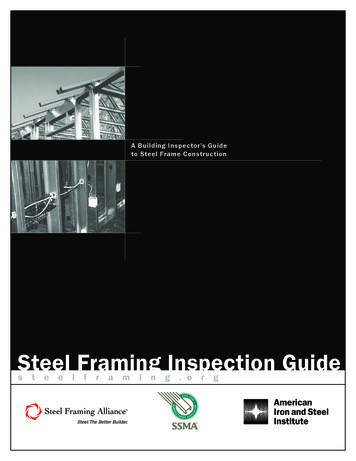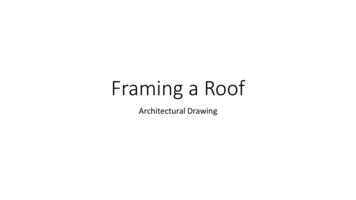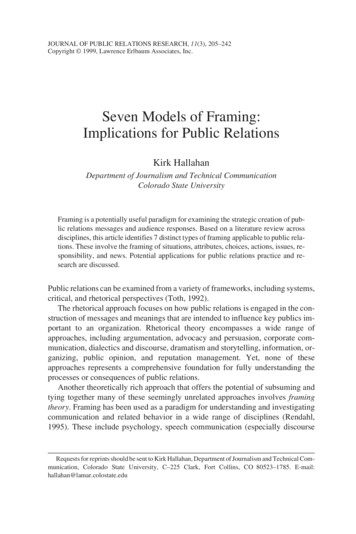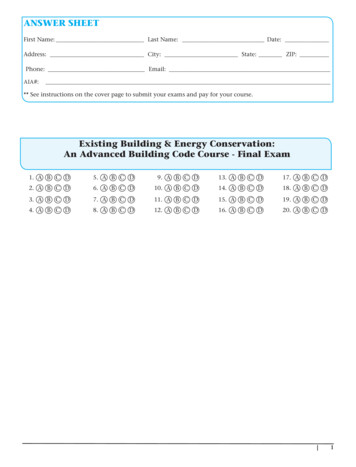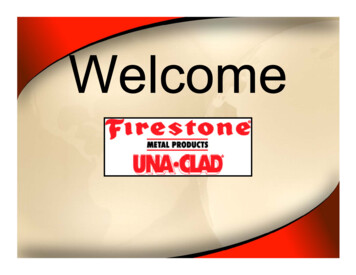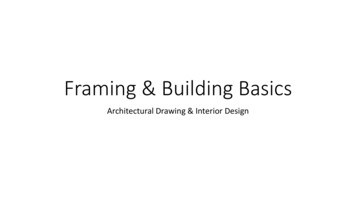
Transcription
Framing & Building BasicsArchitectural Drawing & Interior Design
Introduction to Framing Once you have your floor plan design, you are now ready to plan forbuilding. In order to accomplish this, you must know the correct methodsneeded to properly frame a house. While this can get extremely daunting in larger homes, if you take itbit by bit it’s manageable. Framing is an interdependent structural system where one piecedepends on another.
Structural Loads Before we get started with framing we understand structural loads. Structural loads are forces that get to applied to structures, e.g. wind,gravity, snow, earthquakes, people etc. If your house cannot handle such loads it will collapse. Structural Loads include dead loads, live loads, environmental loads.
Structural Loads A dead load is the actual weight of thematerials used in the construction of thehouse, e.g. walls, floors, roofs. Fixed andconsidered permanent. Live load’s are produced by the use andthe occupancy of the building, e.g. peopleand furnishings. Variable and temporary. Deflection is the bounce or give in a floorsystem as a person walks across a room.The stiffer the material the less deflection
Tension A force applied to an object thathas a pulling affect.
Sheer A force that pushes part of anobject (building) in one directionwhile the other goes an oppositeway.
Torsion The twisting of an object due toan applied torque. Torque is rotational force.Indian Sunburn! Ooowweeee!!!!
Wind Load Lateral pressure may be positive(pushing) or negative (suctionforces on the leeward side). Wind pressure can also produceuplift.
Hurricanes Hurricane prone areas are thecoastal areas of the AtlanticOcean and the Gulf of Mexicowhere wind speed exceeds 90mph. Additional protection is requiredfor exterior glazing where windblown debris might be aproblem.
Snow Load The IRC (InternationalResidential Code) specifies thatthe snow load for the roof of ahouse must support 70 psf. Amount of snow accumulatingon roof.
Framing Your House Framing is the process ofattaching building materialstogether to create a structure. A system used to attachmembers together that makes itstrong and energy efficient. There are terms used to describethe each member of a house.
Parts of a Wall: Studs Vertical members of a wall arecalled studs. Studs connect the top plate withthe bottom plate. Used in the construction ofwindows and doors. Cripple stud is a stud cut shortto allow a window, or on top of adoor. Jack stud is cut short to allow adoor.
Parts of a Wall: PlatesTop plate Plates are horizontal membersof the wall connected by studs. Bottom Plates are used toconnect the wall to the floor. Top Plates support the floorabove. Usually doubled up. Sill Plates support windows andsit on top of cripple studs.Bottom plate
Parts of a Wall: Headers Headers are horizontal membersused to transfer loads to jackstuds. Doubled up to match thicknessof studs. Cripple studs inserted above theheader for extra support.
Parts of a Floor Floor framing consists of asystem of sills, beams, girders,joists, and subflooring. Walls sit on top of floors. Floorssit on top of walls.
Parts of a Floor Cont. . Joists are the horizontal membersof the floor. Like studs spaced outat equal distances. Header (Band) Joists connect thejoists together. They wrap aroundthe joists. Sits on top of sill plate. Subflooring is usually plywood.Used to combat shear forces,provides safe work environment,and provides nail-able surface forthe finish floor.
Parts of a Floor Girders are beams used inconstruction as the mainhorizontal support. Supports the joists that sit ontop of it. Placed mid span of the joists toresist deflection.
In Conclusion A structure must withstand a number of forces being applied to it. Examples of forces are Tension, shear, and torsion. Live loads and dead loads must be taken into account when designinga structure. Framing is the process of connecting building materials together tocreate a structure. Framing is a construction system. Studs, plates, headers, rafters, girders, flooring and joists are all terms used toidentify different components in framing.
materials used in the construction of the house, e.g. walls, floors, roofs. Fixed and considered permanent. Live load’s are produced by the use and the occupancy of the building, e.g. people and furnishings. Variable and temporary. Deflection is the bounce or give in a floor system as a person walks across a room. The stiffer the material the less deflection. Tension A force applied .File Size: 1MBPage Count: 19
